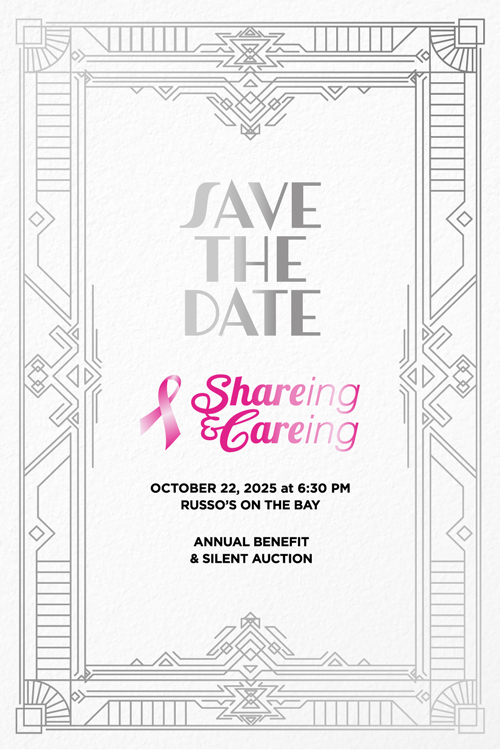Chemotherapy, often called “chemo,” is a common treatment for many types of cancer, including breast cancer, the most commonly diagnosed cancer in the world. Here are some of the frequent questions patients and family members have about chemo when it is prescribed as part of a cancer treatment plan.
How & When Does Chemo Help Treat Cancer?
Chemotherapy drugs are drugs that attack the different cell cycles of living cells. It is different from “targeted therapy” which attack only cancer cells. Most cancer treatment plans involve multiple types of treatments, such as surgery, hormone therapy, immunotherapy, or radiation, in conjunction with chemotherapy drugs. Chemo can be used at different points in your treatment depending on the cancer type and stage.
- Neoadjuvant chemotherapy — When chemo is used before surgery (with the aim to help reduce the size of the tumor or reduce the speed at which it grows) it is called neoadjuvant chemotherapy.
- Adjuvant chemotherapy — Adjuvant chemotherapy comes after surgery, with the goal of destroying any cancer left and limiting the risk of recurrence.
- Palliative chemotherapy — Palliative chemotherapy is when chemotherapy is used to improve symptoms and quality of life rather than to cure cancer.
Risk-Reducing Mastectomy and Surgery for Breast Cancer Prevention
What are the Different Types of Chemo Drugs?
Chemo drugs can be broken down into four different drug classes:
- Alkylating agents — these are the most commonly prescribed today and were some of the first to be used to treat cancer. They work by preventing cell DNA from dividing and are most effective against slow-growing cancers. Busulfan, cisplatin, chlorambucil, thiotepa, and cyclophosphamide are examples of these types of cancer drugs.
- Plant alkaloids — these drugs, derived from plants, work by preventing the division of cancer cells. Doxorubicin, etoposide, mitomycin, vincristine, and actinomycin D are types of plant alkaloid chemotherapy drugs.
- Antimetabolites — these drugs impersonate natural substances that are used in our bodies to create cells, eventually starving cancer cells of their building blocks. Purine antagonists, folate antagonists, and pyrimidine antagonists are all examples of these types of drugs.
- Antitumor antibiotics — these drugs, not related to well-known antibacterial antibiotics like penicillin, work by preventing RNA synthesis, which is necessary for cells to survive. Examples of these drugs include mitoxantrone, doxorubicin, and bleomycin.
Types of Breast Cancer Treatment
When chemotherapy drugs are taken in specific combinations, they are called “regimens” and are usually named as an acronym of their drug components. Some commonly prescribed regimens are FOLFIRI, ABVD, XELOX (also called CAPOX), FOLFOX, CHOP (and the modified version, R-CHOP), MVAC, and TCHP.
Who is a Good Candidate for Chemotherapy?
Most cancer patients receive some type of chemotherapy treatment, often in combination with other treatment types. For those suffering from triple-negative breast cancer, a notoriously hard-to-treat cancer that strikes a disproportionate amount of Black women, chemotherapy is one of the few avenues of treatment.
21 Risk Factors For Breast Cancer
Who can skip chemotherapy? Some patients with very early stages of breast cancer can be treated with mastectomies alone, with no chemotherapy. And a recent study showed that some postmenopausal women with certain types of breast cancer do not benefit from chemo. Women who are in their first trimester of pregnancy should not undergo chemotherapy, and are limited to a few chemo drugs during their second and third trimesters, even then, with risk to the fetus.
How is Chemo Given?
Chemo is typically given through injection, either through a catheter, a small flexible tube inserted into the arm or hand at the moment of injection, or through a chemo port or central venous catheter (CVC), a larger catheter that is surgically implanted for the duration of your treatment. Depending on your treatment plan, your chemo drugs can either be administered over a few minutes (IV push), a few hours (IV infusion), or 1-3 days (continuous infusion). Intrathecal chemo is a type of injection given via a catheter in the fluid surrounding the spine and brain, where regular chemo injections cannot reach.
While not as common, chemotherapy drugs can also be taken orally, in pill form, or topically, as a cream or gel. Both are more expensive and are not always covered fully or even partly by health insurance companies. They are considered hazardous and require special handling and precautions around family members. Patients that get nausea after chemo treatments may have difficulty keeping oral chemo drugs down.
Get our “Thriver Thursdays” Email
Get all the latest cancer prevention and treatment news plus upcoming survivor programs, straight to your inbox every Thursday. Your privacy is important to us.
What Side Effects Does Chemotherapy Have?
Because chemotherapy drugs affect both healthy and cancerous cells, side effects are common. The more drugs used, the higher the side effects, so doctors must carefully weigh drug effectiveness against the side effects. Some common side effects include:
- Fatigue
- Easy bleeding and bruising
- Hair loss
- Infection
- Vomiting and nausea
- Anemia
- Appetite changes
- Diarrhea
- Constipation
- Mouth, throat, and tongue problems (such as swallowing pain and sores)
- Nail and skin changes (such as color changes and dryness)
- Nerve problems (tingling, numbness, pain)
- Weight fluctuations
- Urine, bladder, kidney problems
- “Chemo brain” (foggy or cloudy thinking)
- Libido or sexual changes
- Mood changes
- Fertility issues
- Hepatitis B reactivation (if previously infected)
How much does Chemotherapy Cost?
Chemotherapy treatment includes a wide variety of medical procedures including prescription drugs, surgeries, office visits, lab tests, treatment visits, imaging tests, rehab, home care services, transportation, and even wigs.
In the United States this cancer care is expensive. According to the National Cancer Institute, in 2010, Americans aged 65+ paid annually from $5,047 (female melanoma) to $115,250 (male brain cancer) for their first year of care. Cancer care in the last year of life was up to four times these amounts. What’s worse, out-of-pocket costs for cancer care is only growing.
Many people in Queens are uninsured or under-insured and cannot pay these costs. Please contact us if you or a loved one needs financial assistance. We have connections with individuals, government programs, and private organizations that can help pay for your cancer care. We can also connect you to low-cost or free treatments and cancer imaging.
Mammogram Facts & Frequently Asked Questions
For those that are insured, not all insurance carriers cover cancer services equally, or have restrictions and limitations on them. Some insurers may cover part, none, or all of your care depending on your plan, and you will likely be required to pay some sort of co-pay. Coverage denials are common and you may be required to pre-authorize your care with your insurance. Insurance can be a confusing, stressful part of cancer treatment. Our patient navigators can help with understanding this paperwork, submitting pre-authorizations, navigating claims, and appealing insurance denials.
Regardless of insurance status, the mission of SHAREing & CAREing is to enable all Queens residents to get the cancer care they need. Please contact us at any time in your cancer care journey for individual support. Or, consider joining our monthly in-person support group held in Astoria, or join our virtual support group on Facebook, NYC Cancer Support.
Sources
- “Types of Chemotherapy Drugs”, National Cancer Institute
- “SEER*RX Interactive Antineoplastic Drugs Database”, National Cancer Institute
- “Getting IV or Injectable Chemotherapy,” American Cancer Society
- “Getting Oral or Topical Chemotherapy,” American Cancer Society
- “Chemotherapy Side Effects,” American Cancer Society
- “Annualized Mean Net Costs of Care per Patient,” National Cancer Institute

